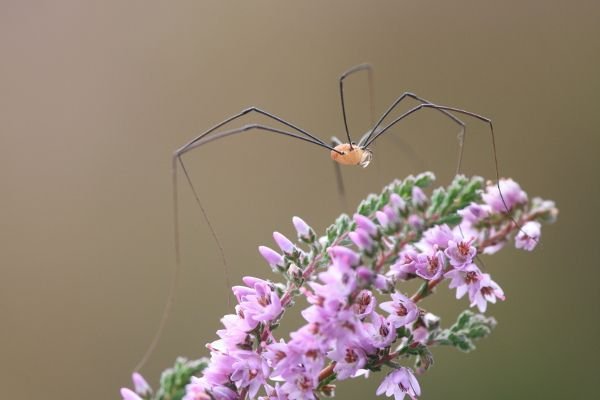The Good Kind of Pests: What to Keep Indoors and Out
Are you a bug hater? Do all things that creep and crawl give you goosebumps? Contrary to what you may think, not all bugs are bad. In fact, having some bugs in and around your home can actually be highly beneficial. The reality is that only a very small percentage of bugs are considered pests. Here's a short list of five that you may want to change your mind about.1. Spiders - Disease Control

You share your indoor space with spiders even if you don't know it. Spiders are the most prevalent of indoor bugs and can be so small that you don't even realize they're in your home. Although most spiders are virtually harmless, they will bite if threatened. Bites may cause a slight stinging to more serious complications. It's always wise to seek medical attention if have a serious reaction to a spider bite.
There are several benefits to having spiders inside your home including:
Pest control
Spiders eat pests like roaches, mosquitoes, earwigs, and flies for breakfast, lunch, and dinner. If you leave your resident spiders alone they will take care of all of your household pest control needs.
Spider control
Spiders will kill other spiders so you don't have to. When one spider meets another spider a battle ensues until one rises victorious (and eats the dead spider for its prize). If you live in an area prone to black widow spiders, you will want to keep some of the long-legged cellar spiders around; they're notorious for killing widows.
Disease control
Spiders eat pests that spread disease including mosquitoes and flies. This will keep everyone in your home, including Fido, healthy and happy,
2. Ladybugs - Cheaper Than Pesticides

Everyone loves a ladybug, right? They are really cute, but don't let them fool you -- they have strong predatory instincts and a ravenous appetite. One single ladybug will eat up to 5,000 aphids in its lifetime. There are over 4,000 different types of ladybugs in the world, varying in shape, size, and color.
Most, but not all of them, are beneficial, especially to your garden. The best ladybugs are the ones that will kill not only aphids but also chinch bugs, bean thrips, grape rootworms, spider mites, mealybugs, and more. Ladybugs are a very inexpensive way to control pests in the garden and are safer and generally just as effective as pesticides. In addition, they are self-renewing -- ladybugs will create more ladybugs and the cycle goes on.
You can even mail order ladybugs for your garden, but it's always best to do what you can to attract the native ladybugs in your area. You can do this by planting heavy pollinators such as sunflowers, butterfly weed, and fennel.
3. Centipedes - Nighttime Patrollers

Yes, they are slightly gross with all of their legs and long tentacles skittering around the floor. Centipedes are often referred to as "old house bugs," as they tend to always be found in older homes making their way along baseboards or resting in the sink or shower. If you have ever tried to kill a centipede, you know that they are fast. In fact, some can reach speeds up to 16 inches per second.

However, you may not want to be so quick to kill these little sprinters. Centipedes are nighttime hunters that come to life when the light goes down. They eat all sorts of other bugs including termites, ants, spiders, cockroaches, silverfish, and even bed bugs. So, having a few of these night patrollers around might not be such a bad thing after all. Keep in mind, they are also useful in your garden!
4. Praying Mantis - Mosquito Killers

This is another bug that many people find creepy, probably because of its weird bulging eyes and long arms. But if you hate mosquitoes, you should love a praying mantis or two because they can devour hundreds of mosquitoes in a single meal. They will also eat mites, insect eggs, caterpillars, and leafhoppers. A word of caution with the praying mantis: they are not particularly selective when it comes to what they eat and could devour the helpful bugs you do want around.
5. Bumble Bees - Food Pollinators

This little bee with its fuzzy black and yellow stripes seems to put fear in many people, however, they are tremendously beneficial. They go the extra mile when it comes to pollinating everything in site. Bumblebees pollinate about 15% of our food crops and without them there would be a serious disruption in our food supply. Think about this the next time you go to swat a bumble bee just flying around doing its job. Although the female bee can sting when aggravated, they would prefer to just be left alone to do their job.
Think Twice
There are more beneficial bugs on earth than harmful ones. It's important for us to see the bigger picture of how these insects play into the delicate balance of life. Once you get this picture in your head, you may be willing to overlook their presence and even learn to respect them.
http://doityourself.feedsportal.com/c/35026/f/647105/s/4793c442/sc/15/l/0L0Sdoityourself0N0Cstry0Cthe0Egood0Ekind0Eof0Epests0Ewhat0Eto0Ekeep0Eindoors0Eand0Eout/story01.htm